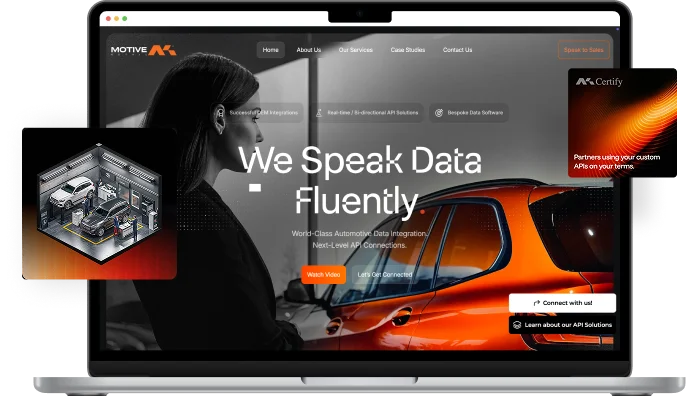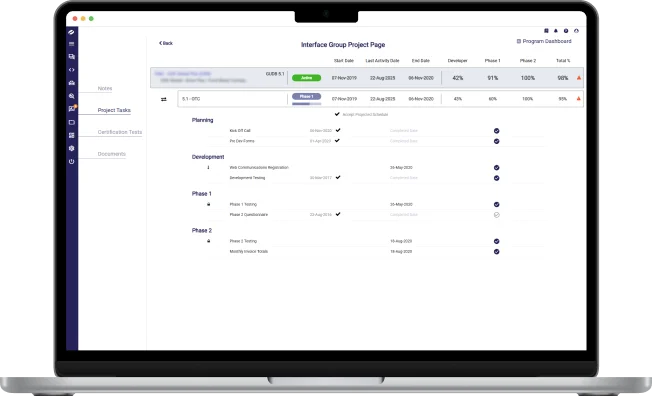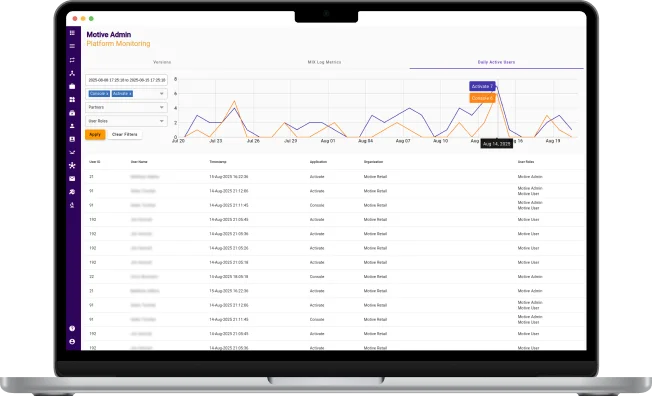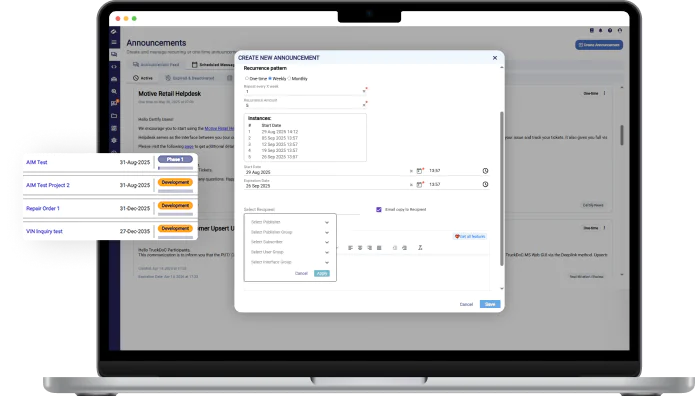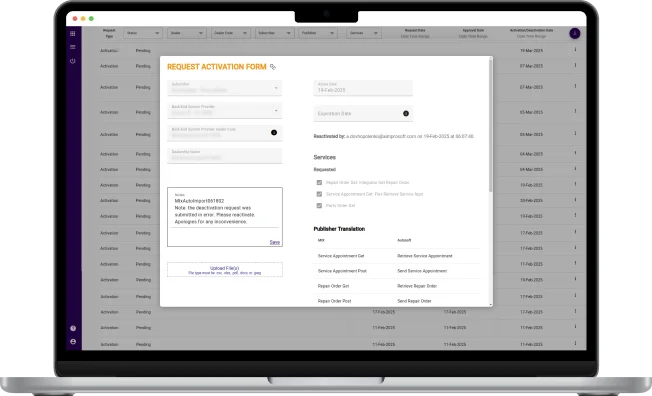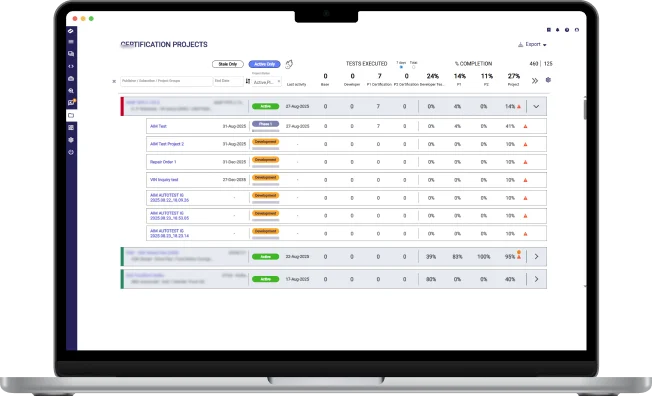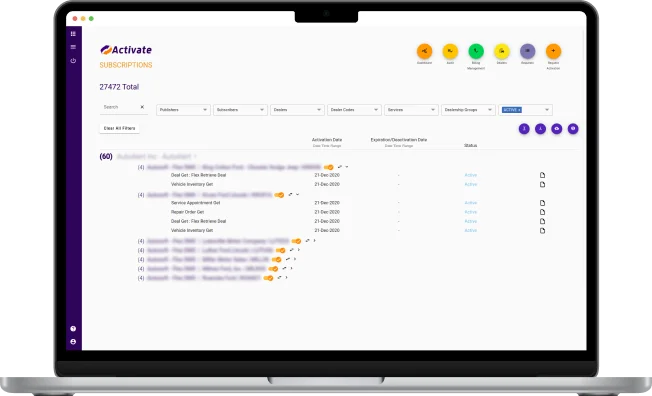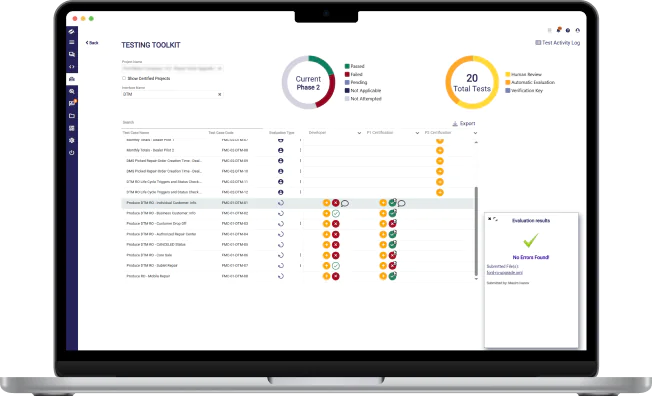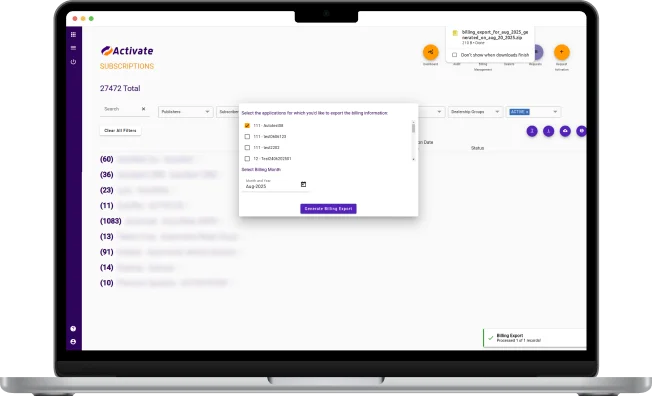Story
Since 2008, our team has partnered with Motive Retail, a US-based company connecting major players in the automotive retail sector through APIs. By standardizing data exchange with APIs, Motive Retail ensures consistent information flow between diverse participants in the automotive supply chain and service providers, including OEMs (parts manufacturers), parts suppliers, DMSs (dealer management systems), dealers and insurers. Over the years, we’ve built and evolved some of their ecosystem’s core platforms to support faster and more secure collaboration, reduce manual processes, accelerate onboarding and ensure secure, compliant connectivity. These platforms include:
-
Motive Integrator eXchange (MIX)
The customer portal had to support electricity, gas, mobile, internet, and insurance offerings, and ensure clarity, speed, and a coherent user experience for both individuals and businesses.
- Activate to govern API subscription approvals and dealer data flows, automating what used to be manual dealer approvals and speeding up the activation of new integrations
- Console to enable real-time analytics and monitoring of API traffic and performance, helping internal teams and partners quickly detect and resolve issues before they affect business operations
- Admin Panel lets Motive Retail configure and manage services like API subscription updates directly through the interface without manual database changes, making updates faster and less error-prone
- Certify is a standalone API certification and onboarding platform that structures dealer, manufacturer, and subscriber integrations into MIX. When participants join MIX, Certify verifies compliance and readiness, ensuring integrations are consistent, tested and production-ready.
- Validation API is a high-load internal service that offloads and automates XML (Extensible Markup Language) file validation from Certify, making API certification flows faster.
- A custom-branded certification portal for one of Motive Retail’s manufacturing partners is based on Certify’s core architecture and workflows, but expanded with additional dashboards, reporting and incident management tools to meet their partner’s operational requirements. We also added a file transmission service that lets internal teams upload large assets, catalogs and documentation, for secure distribution to authorized third parties.
We’ve been Motive Retail’s long-term technical partner for over 17 years. From redesigning legacy products to building out capacity to handle hundreds of thousands of requests daily with zero deployment failures, we have contributed to every stage of their platform’s evolution.
Today, our team continues to work closely with theirs to implement new features, improve platform usability, and support the smooth rollout of upgrades and new features across their digital ecosystem.
-
17+years of partnership, and counting
-
50M+transactions handled by MIX per month
-
10Хfaster email delivery across Certify
-
100,000+of API requests processed daily through Activate
-
0%deployment failure rate


